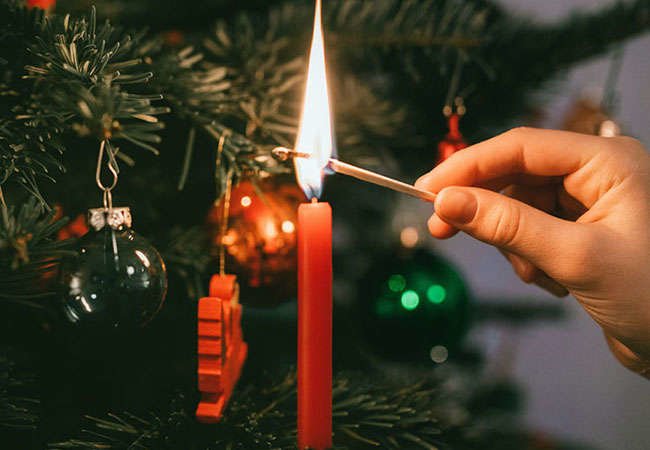We may earn revenue from the products available on this page and participate in affiliate programs. Learn More ›
A little history
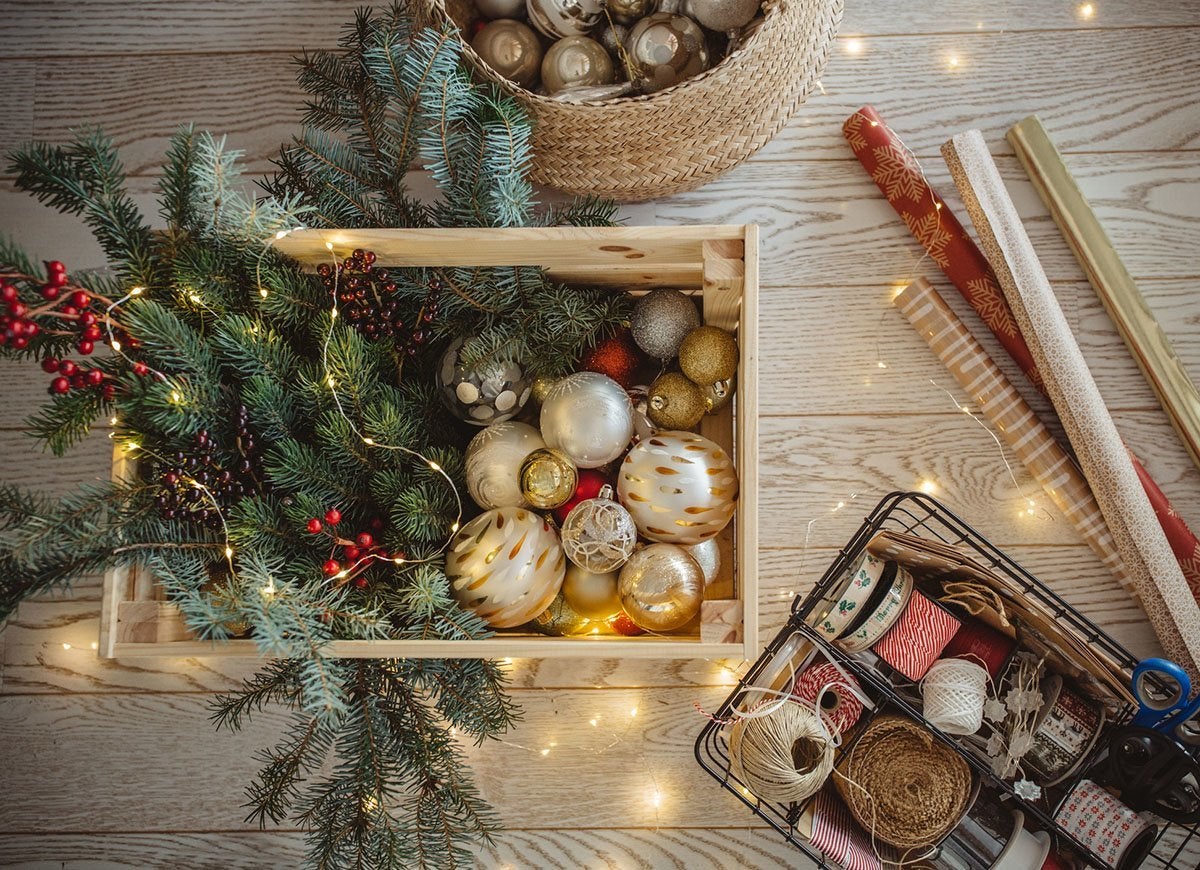
Like clockwork, holiday-happy decorators annually pull their Christmas decor from storage and deck the halls at the end of November and early December. But have you ever stopped to wonder why you trim that tree, or go crazy for Christmas crackers? Read on to learn the fascinating origins—and longstanding legends—behind classic Christmastime decorations.
A medieval play inspired the characteristic colors of Christmas.
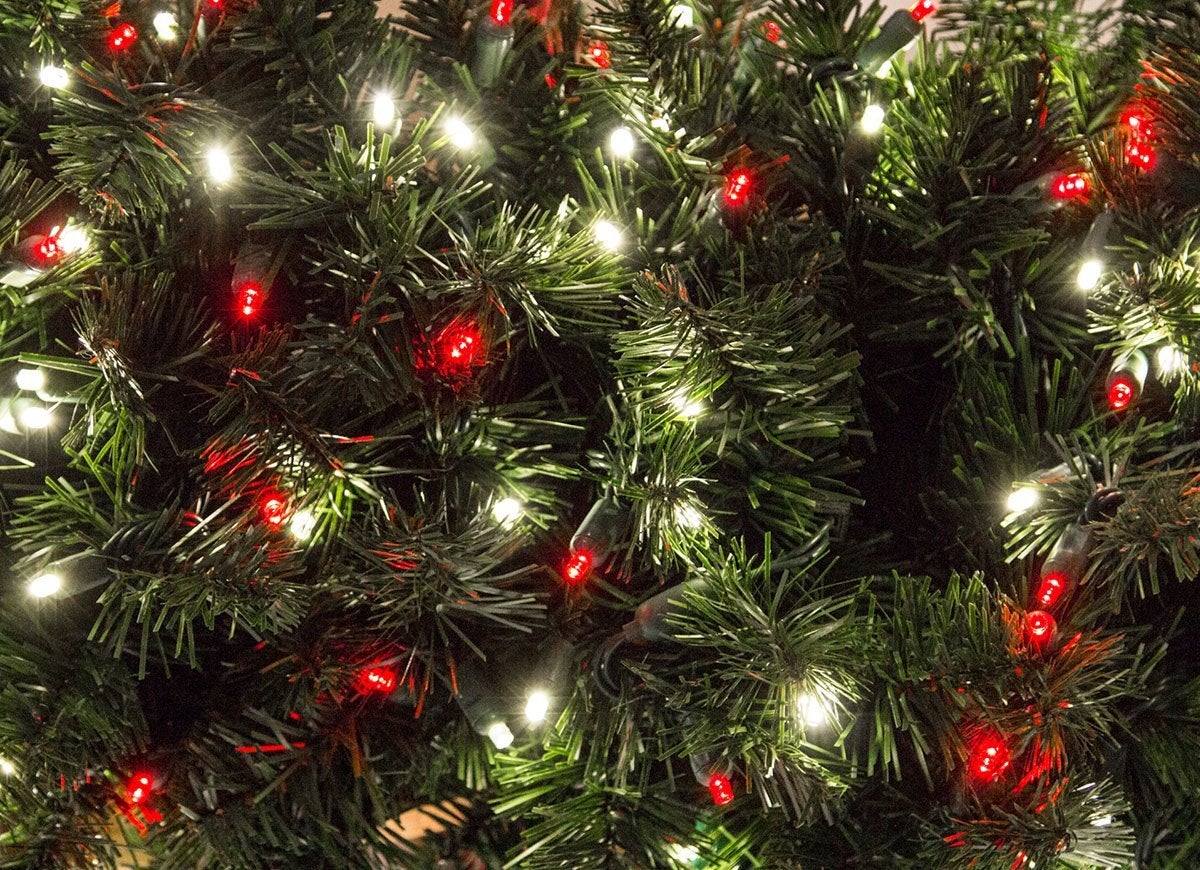
Why do we go gaga for green and red on everything from ribbons to wrapping paper at Christmastime? The colors are thought to be inspired by the Paradise tree, a fir tree with apples that was used as a prop in “The Paradise Play,” an eleventh-century play about the Christian view of Creation. The tree represented the Garden of Eden, its red apples were a symbol of the knowledge that led to Adam’s fall, and the green fir represented eternal life. As for the white wafers that adorned the tree, they represented innocence. The play became associated with Christmas because of its religious themes.
Egyptians were early adopters of Christmas trees.
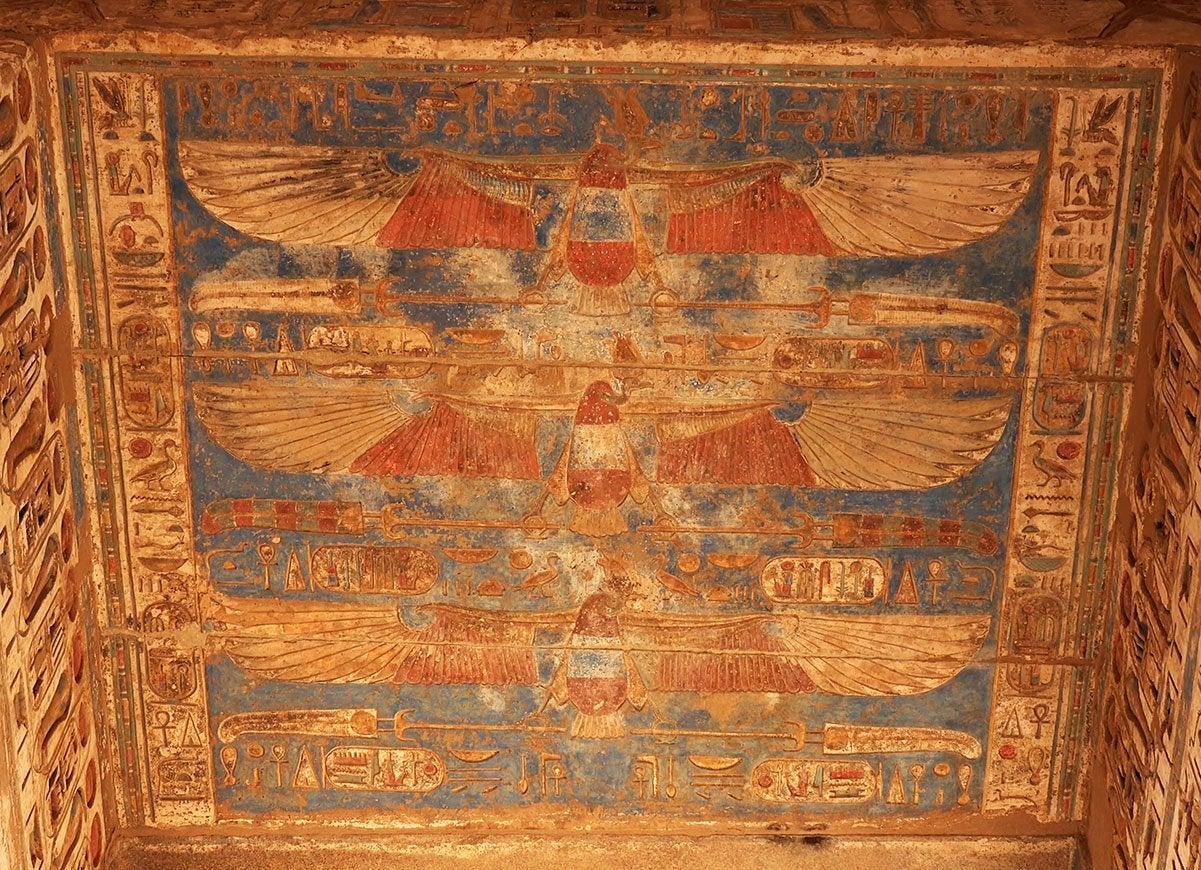
First bringing decorated trees into their homes in the 16th century, German Christians are credited with inaugurating the tradition of displaying Christmas trees indoors. But did you know that Egyptians embraced evergreens even earlier? Ancient Egyptians decked out their homes in green palm rushes on the winter solstice to celebrate the sun god Ra’s recovery from the ills of winter, which they believed symbolized life conquering death.
Luther lit them up.
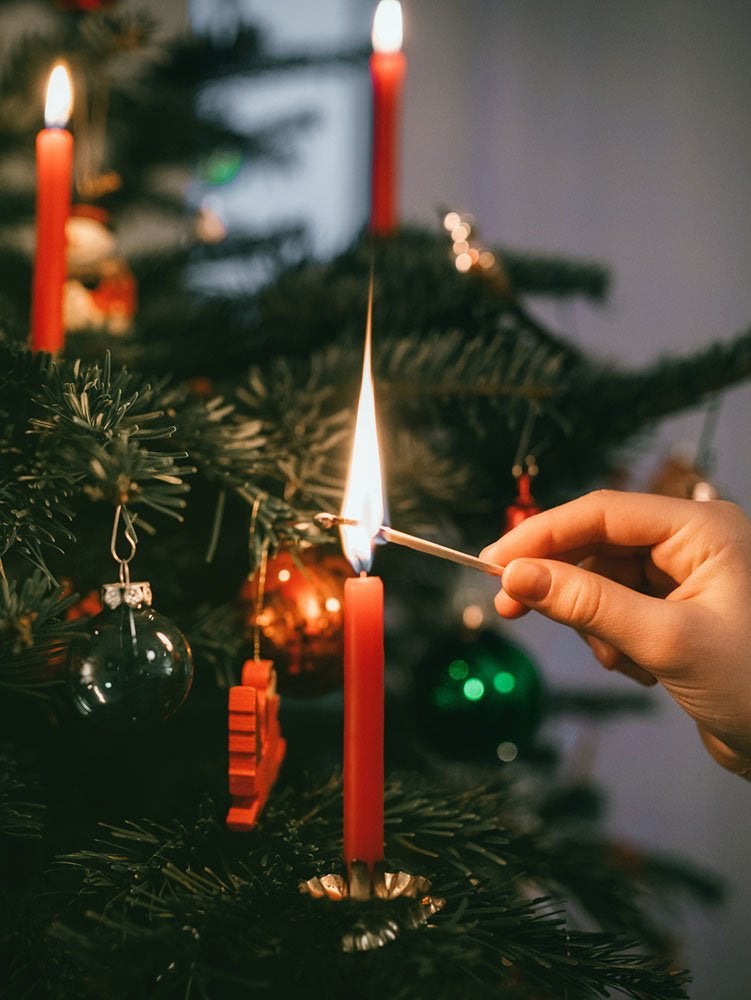
Your tree might look a lot less luminous come Christmas if not for a certain Protestant reformer. Legend has it that while walking home from the woods one winter’s night in the 16th century, Martin Luther was so moved by the sight of the stars shining above the evergreens that he recreated the shimmering spectacle at home by adding small lit candles to the branches of a fir tree he personally cut down. And so the tradition of adding lighted candles to Christmas trees began.
Tinsel was a status symbol.
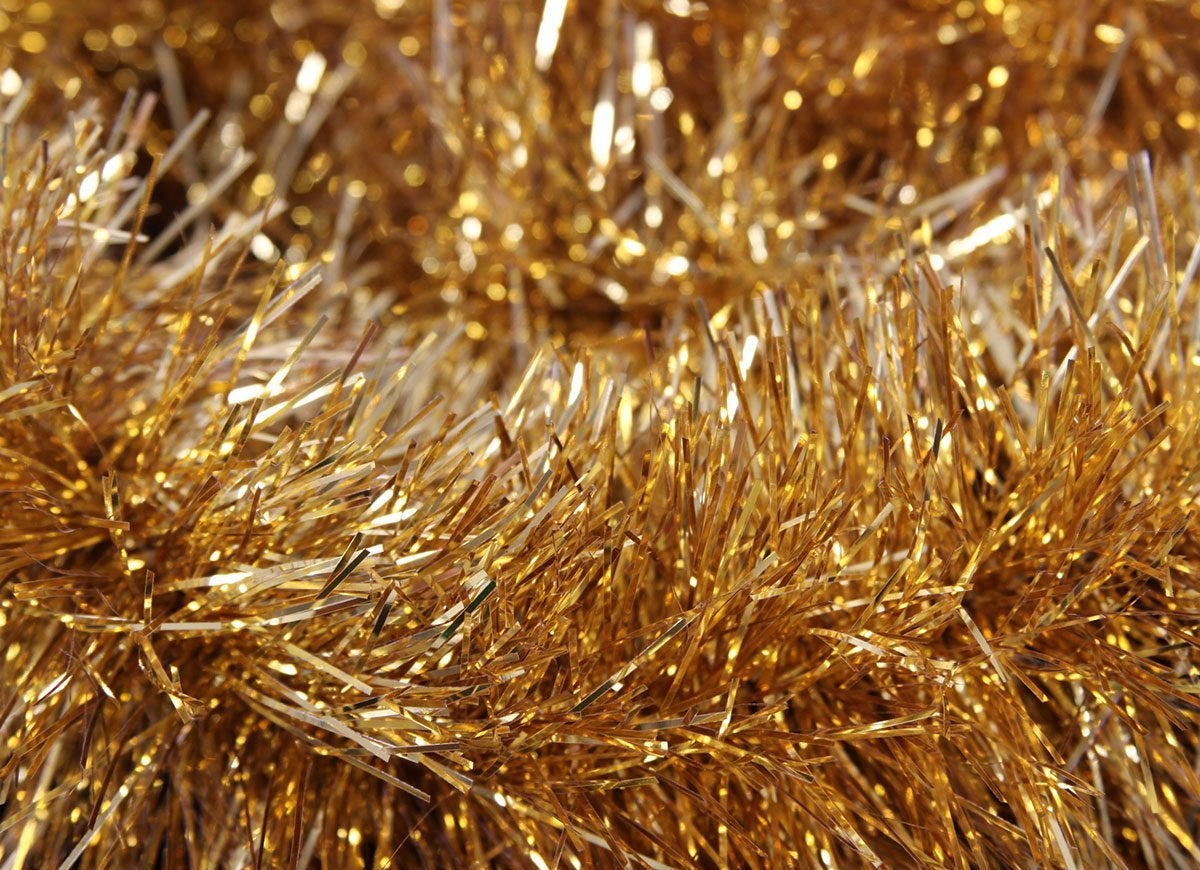
In 1610, when silver was a precious commodity, Germans in Nuremberg displayed strands of silver, which came to be known as tinsel, on their Christmas trees. Not only did the tinsel display their wealth, but it also helped reflect the light of candles that were placed on trees. Cheaper materials, including copper and tin, were swapped for silver to make the decor more accessible to the less well-heeled, but these materials became scarce during World War I, leading to their replacement with aluminum (which they learned was a fire hazard) and lead (which turned out to be poisonous). Today’s tinsel is largely made of polyvinyl chloride and shaped it into its characteristic bands with the help of modern-day machinery.
Related: These 10 Towns Celebrate Christmas Year-Round
Ornaments of old were edible.
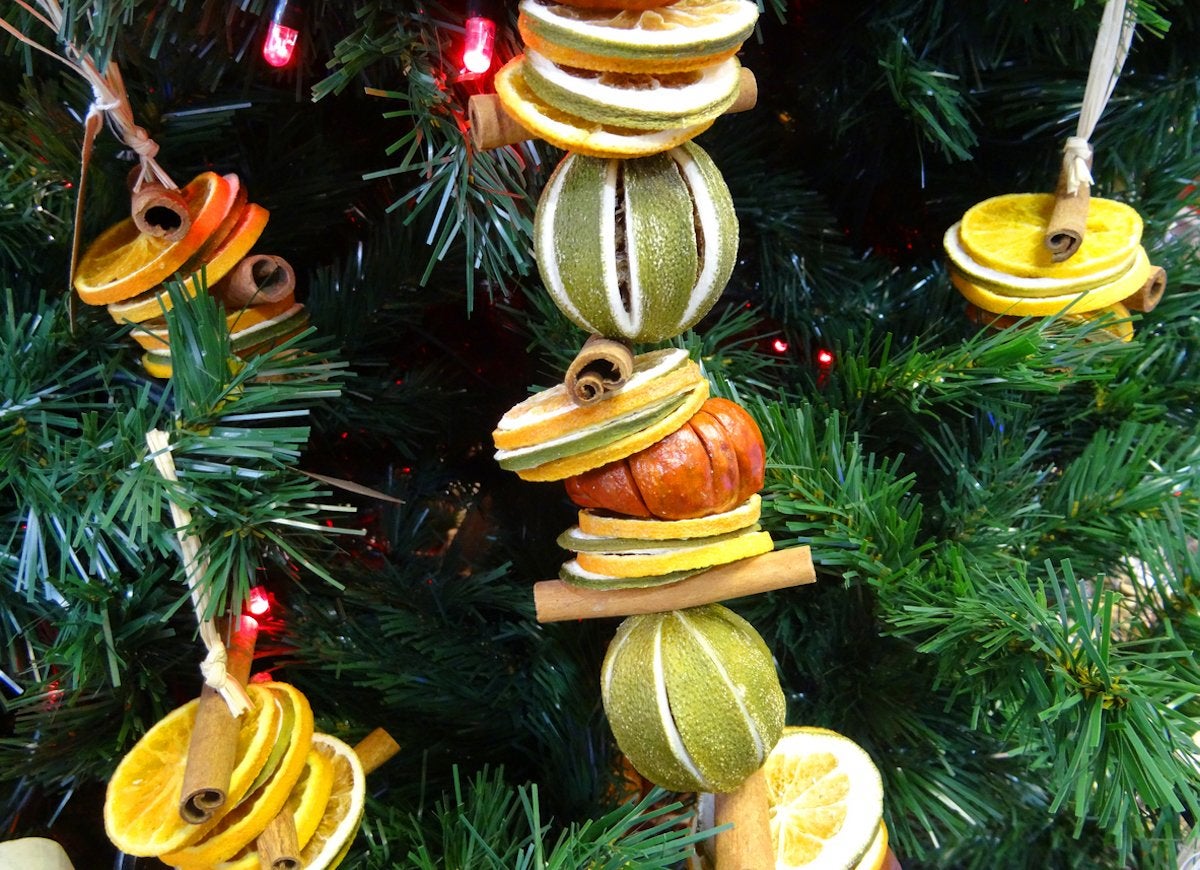
The tradition of adding ornaments to trees kicked off in Germany in the 1600s, when fruits and nuts were laid on evergreens. Manufactured ornaments became all the rage when an image of Queen Victoria and the German Prince Albert’s Christmas tree, decked in baubles, was published in 1848 in “The Illustrated London News.” Wealthy consumers in America followed suit, and by the turn of the 20th century, Woolworths was selling $25 million in German-imported ornaments to consumers who were eager to dress their trees in royal fashion.
Edison and Johnson took tree lights electric.
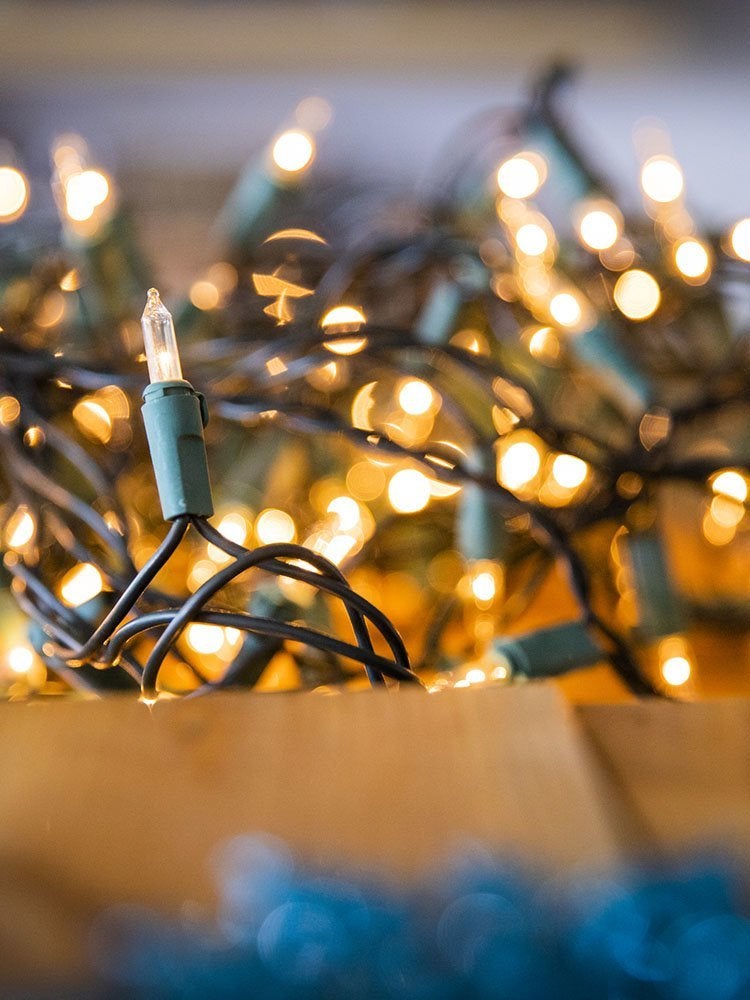
The successor to candles, electric lights, didn’t arrive until 1880, when Thomas Edison created the first strand of lights and wrapped them around his lab in Menlo Park, California. But it was Edison’s partner, Edward H. Johnson, who put the first string of electric Christmas tree lights together and strung them around his tree in 1882. Although the string was hard-wired with 80 red, white, and blue bulbs, it was eclipsed by the 3,000 electric lights used to light the National Christmas Tree on the White House lawn in Christmas of 1923.
Wreaths were an afterthought of the tree cutting process.
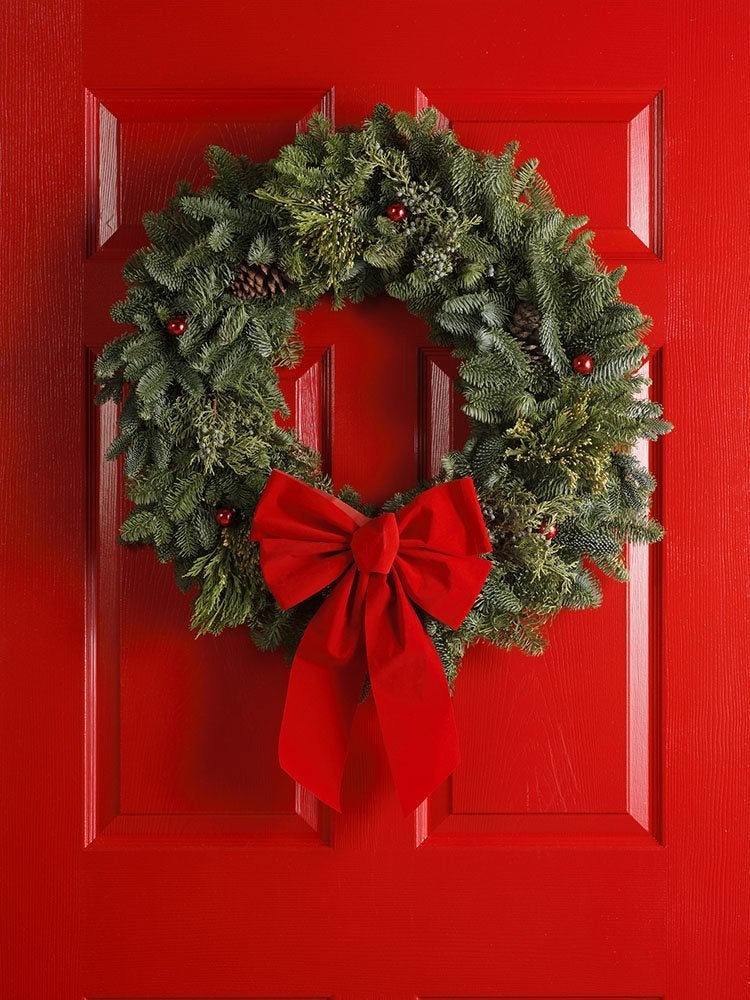
While wreaths occupy a central place on our doors and in our homes during the holidays, they were invented by accident. Rather than discard the clippings from freshly cut and pruned Christmas trees, resourceful revelers of the 16th century salvaged the excess boughs and fashioned them into wreaths. These wreaths were originally placed not on doors but on the tree itself as an ornament symbolizing eternity—a nod to their resemblance to an infinite loop.
The Christmas Star most likely wasn’t a star.
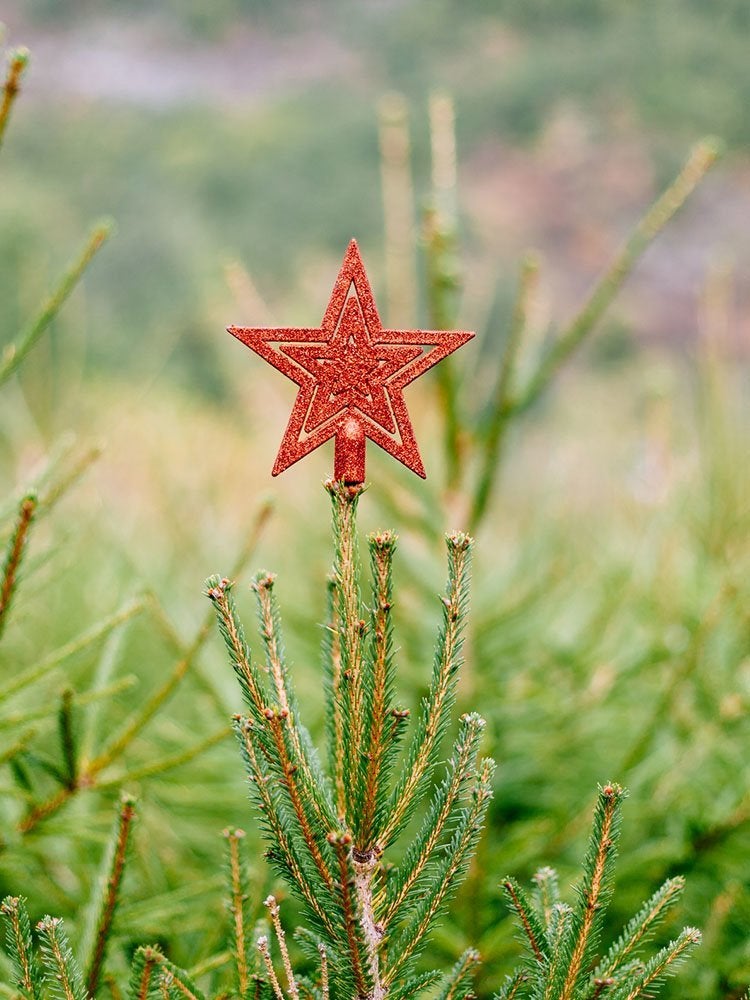
The earliest tree topper was none other than the baby Jesus, a figure that was later swapped for other biblical symbols, namely angels and stars. While the latter is thought to be inspired by the Star of Bethlehem, also known as the Christmas Star, science has never proven the existence of such a star. According to Phys.org, the phenomenon probably wasn’t a comet or a supernova, because such events would have been well documented; it was more likely a “planetary conjunction” in which two planets appeared close together for long enough to be observed in the sky.
St. Nick’s charity keeps your stockings full.
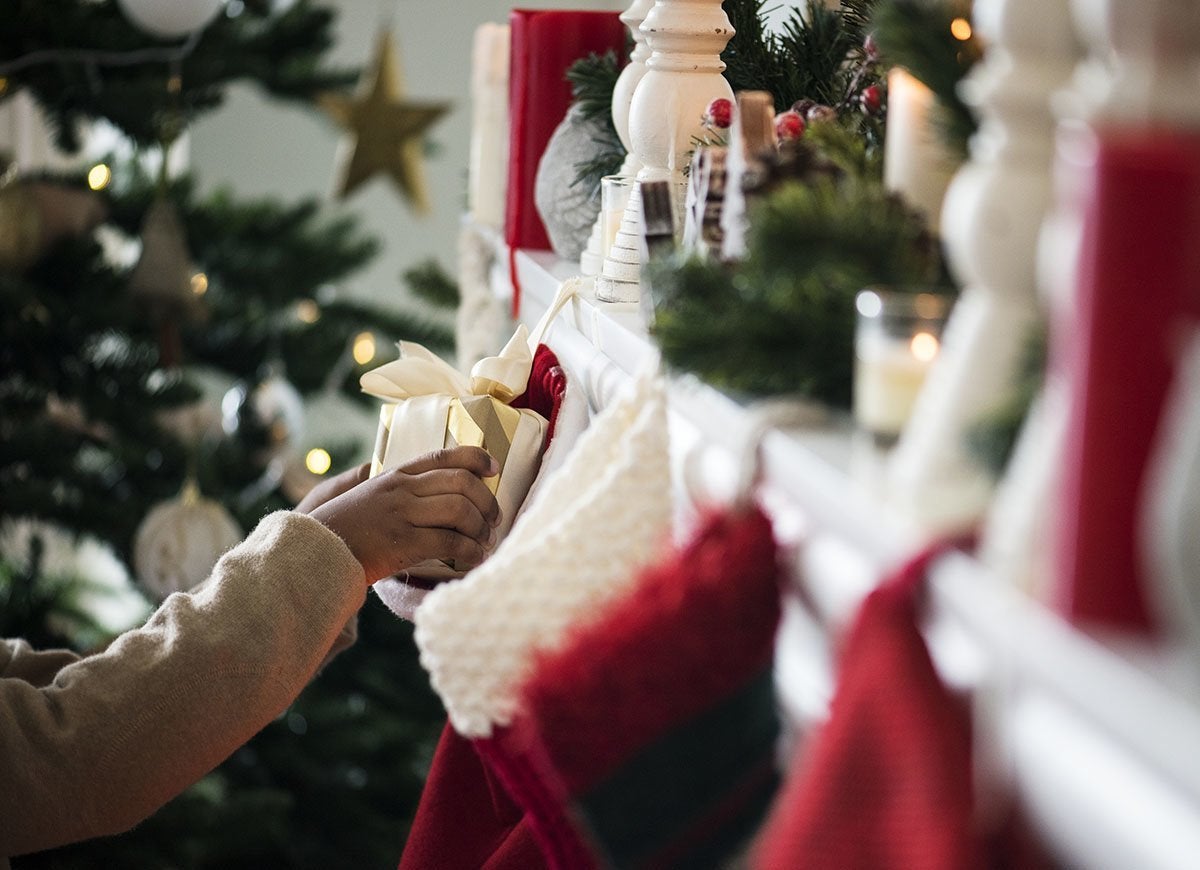
The humble tradition of hanging a stocking from the mantle is said to have been inspired by a man of equally humble origins. Upon learning from villagers that a proud but penurious local widower could not pull together dowry for his three daughters to wed, and was unwilling to accept money from others, an oft-repeated story says that St. Nicholas slid down the man’s chimney and slipped gold coins into his daughters’ newly laundered stockings, which happened to hang by the fire. When the family came upon the gold the next day, their problems were solved, and a new Christmas tradition was born.
Mistletoe cured more than lovesickness.
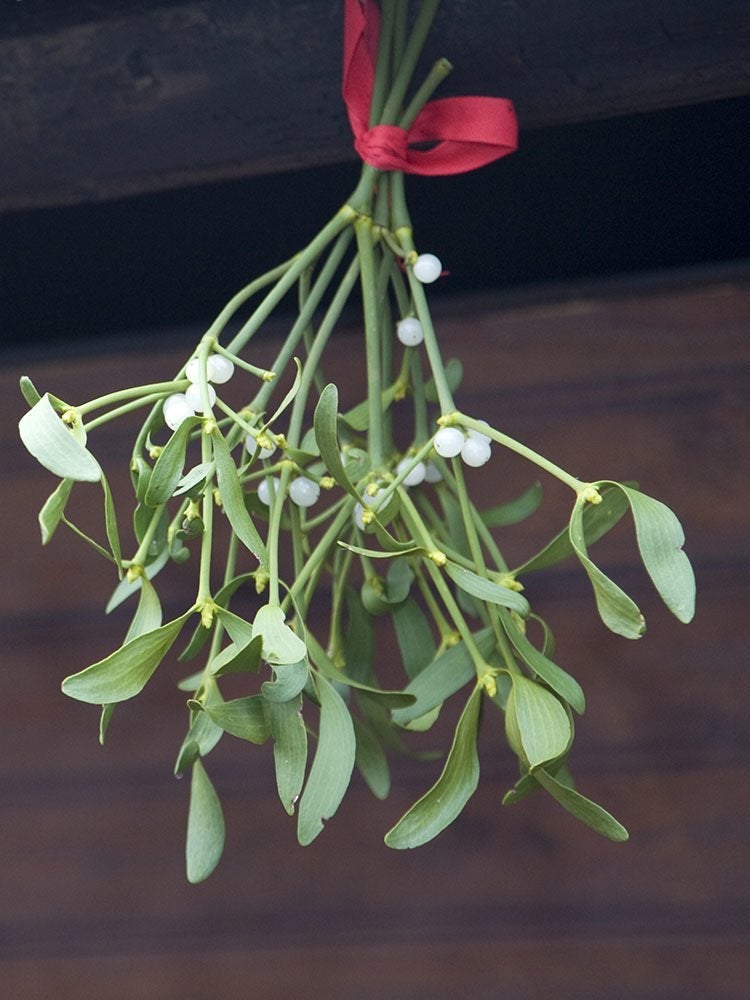
While merrymakers may hang sprigs of mistletoe during the holidays and pucker up when underneath it, the earliest use of the herb was decidedly less romantic. The Greeks used it as a panacea for ailments ranging from cramps to spleen problems, while the Romans viewed it as a salve for ulcers and poisons. It was not until the first century A.D. when it earned secondary connotations. Because the herb had the capacity to grow even in winter, the Celtics Druids saw it as a symbol of fertility and vitality. The kissing tradition is thought to have been started by English servants, and the masses followed suit.
Candy canes didn’t always have stripes.
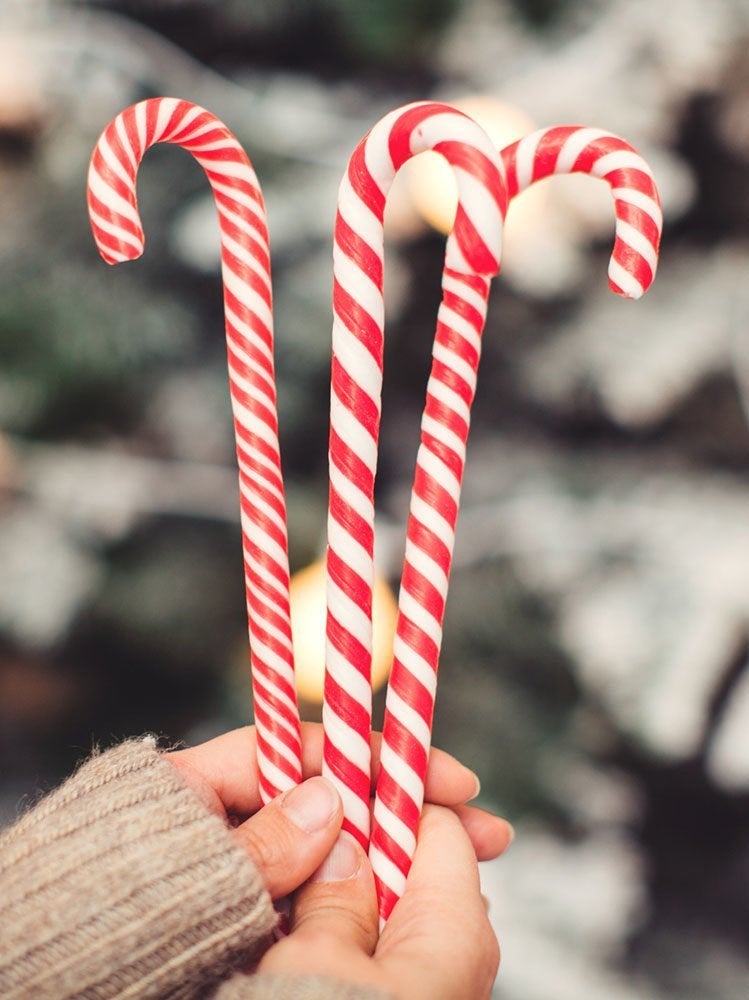
Believe it or not, the iconic hook-shaped confections that adorn Christmas trees during December weren’t always striped. Candy canes made their debut on American Christmas trees in 1847, when one August Imgard decorated his blue spruce tree with the candies that were, at the time, all white. It wasn’t until the turn of the 20th century that the characteristic red stripes and peppermint flavor emerged. Over the years, many rumors have circulated about the symbolism of the candy, ranging from the candy shape being a nod to Jesus Christ’s first initial, to the color being a symbol of his blood—none of which has been proven.
Gingerbread houses have a Grimm foundation.

As much a decoration as a holiday delicacy, “lebkuchenhaeusle” first emerged in Germany in the 16th century as ornate edible houses decked with gold leaf and foil. But it was the 1812 publication of the children’s fairytale “Hansel and Gretel” that is believed to have mainstreamed the holiday tradition of building gingerbread houses. The cautionary tale of a brave brother-and-sister duo tempted by a witch’s homemade confections has inspired countless real-life gingerbread dwellings that are not nearly as menacing, but just as sweet.
Related: 35 DIY Advent Calendars to Help You Count Down to Christmas
Poinsett popularized Poinsettias.
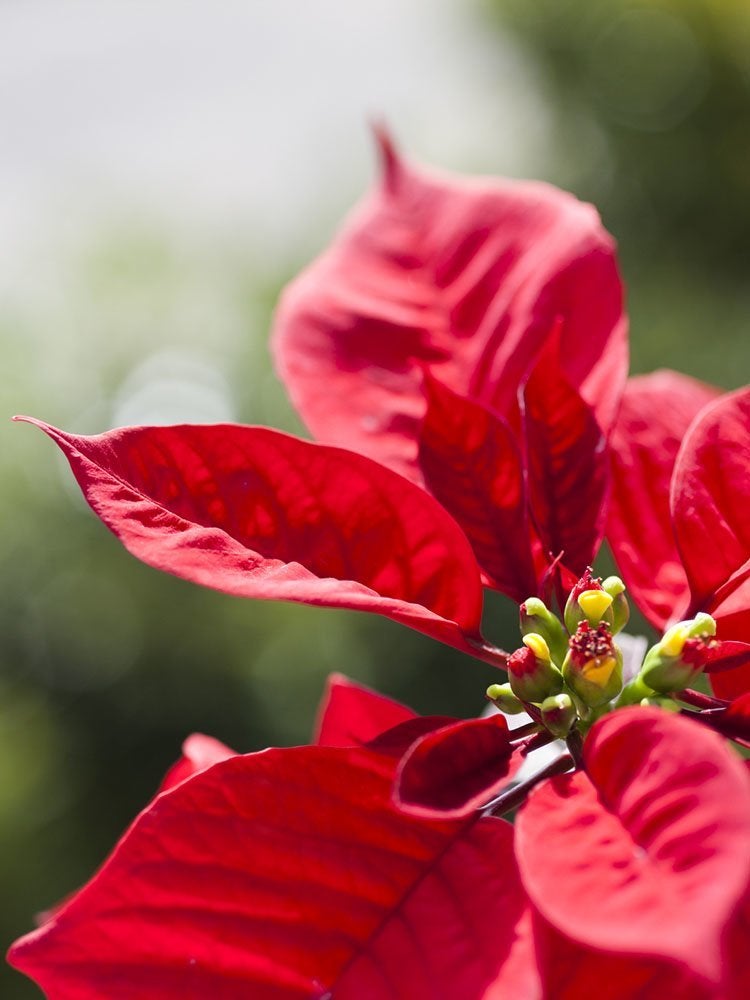
Now a hit in holiday table centerpieces and entryway decor, poinsettias first caught the eye of U.S. minister to Mexico Joel R. Poinsett in 1828, when Christmas festivities in the U.S. were beginning to take off. Upon sighting the flowers known as “flor de nochebuena,” or the “Christmas Eve flower,” in Mexico, Poinsett brought the red-and-green flowers home as a symbol of the holiday season. Earning their English name from Poinsett, Poinsettias were synonymous with Christmas by the turn of the 20th century.
Snow globes started with a kitchen staple.
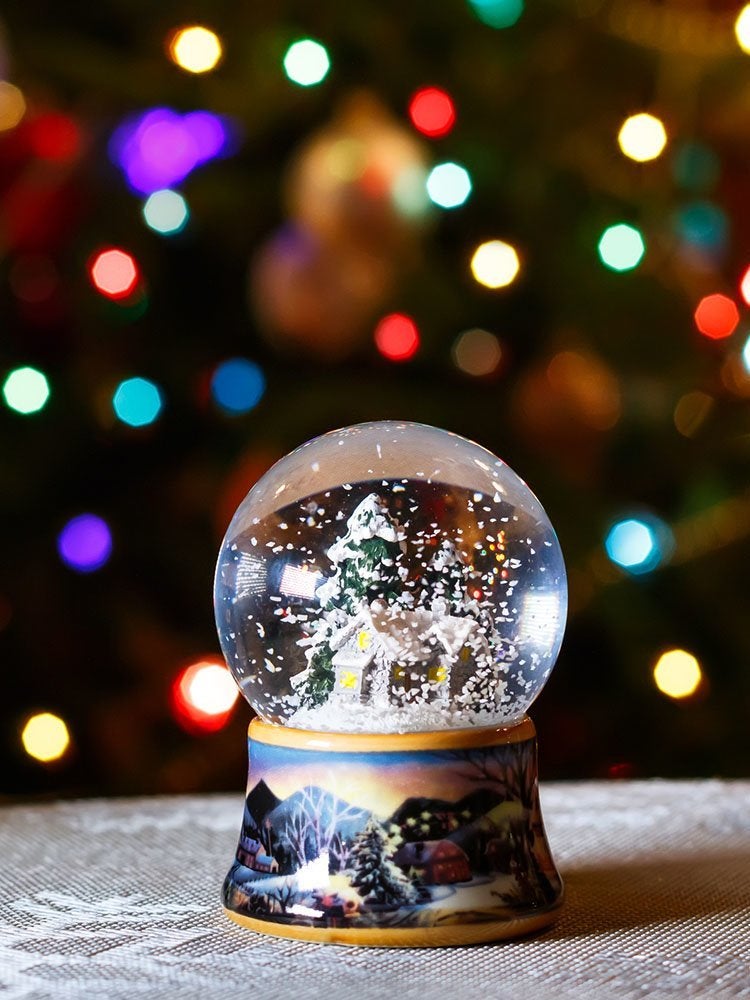
Whether you make or buy one, a snow globe acts as interactive holiday decor and guarantees you get a White Christmas no matter where you live. But it might come as a surprise that these handheld wonderlands were the result of an eccentric experiment. In the process of trying to improve the brightness of electric light bulbs in 1900, surgical instrument mechanic Erwin Perzy poured semolina into a glass globe filled with water, creating an artificial snowfall that became the basis of the snow globe. He included a festive miniature diorama, and the rest is history.
Bells were sounded for devotional purposes.
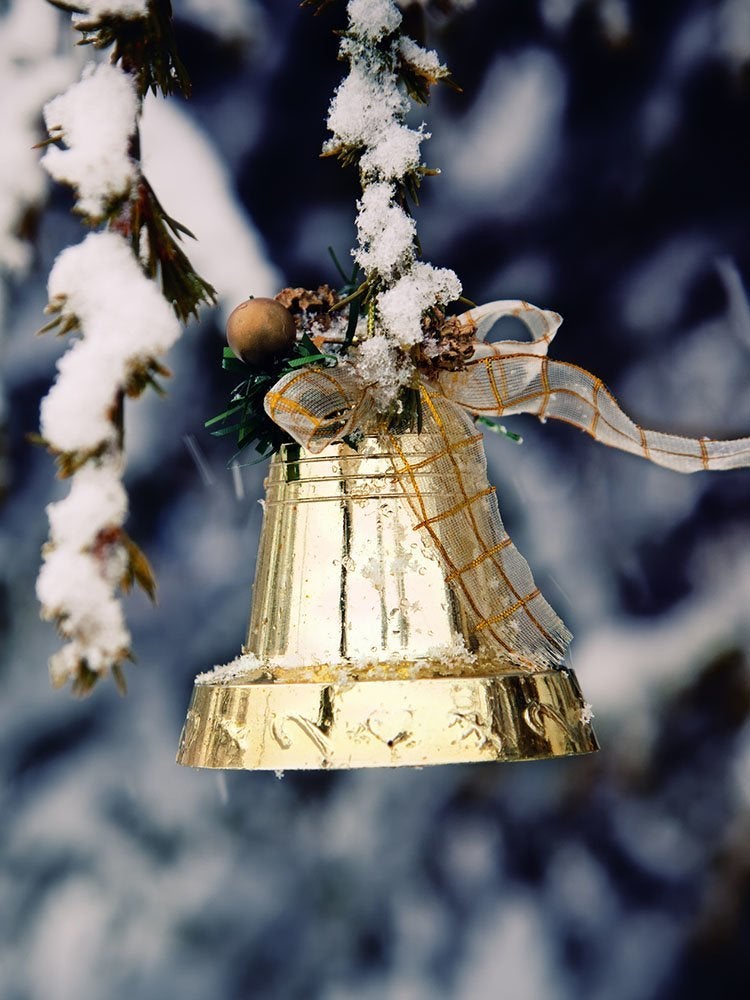
Long before they donned doors, Christmas trees, and wreaths, handheld bells were used by St. Patrick himself to call local parishioners to prayer. The handheld chimes continued to be sounded on religious days such as Easter, thus earning a biblical connotation. But it wasn’t until the Victorian era, when carolers rang them during the Advent season while crooning, that the ding of a bell became the unofficial sound of Christmas.
Holly was fit for the gods.
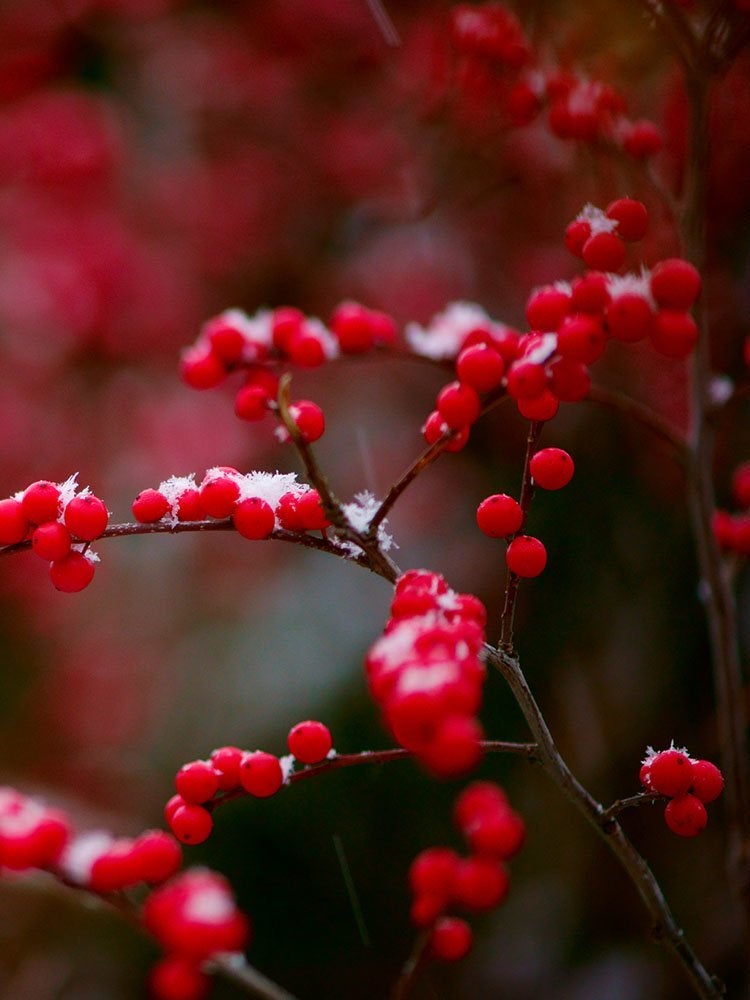
Although holly berries are poisonous to people and pets, this didn’t stop Romans from displaying the boughs of the winter-hardy plant in their homes to celebrate Saturnalia, a winter festival honoring the god of agriculture, Saturn, and marking the much-anticipated transition from the darkness of winter to the light of spring. In a tradition that holds to this day, the ancient people fashioned sprigs of the vibrant plant into garlands and even tacked them onto gifts to make the giving season that much brighter.
The first nativity scene got a thumbs up from the Pope.
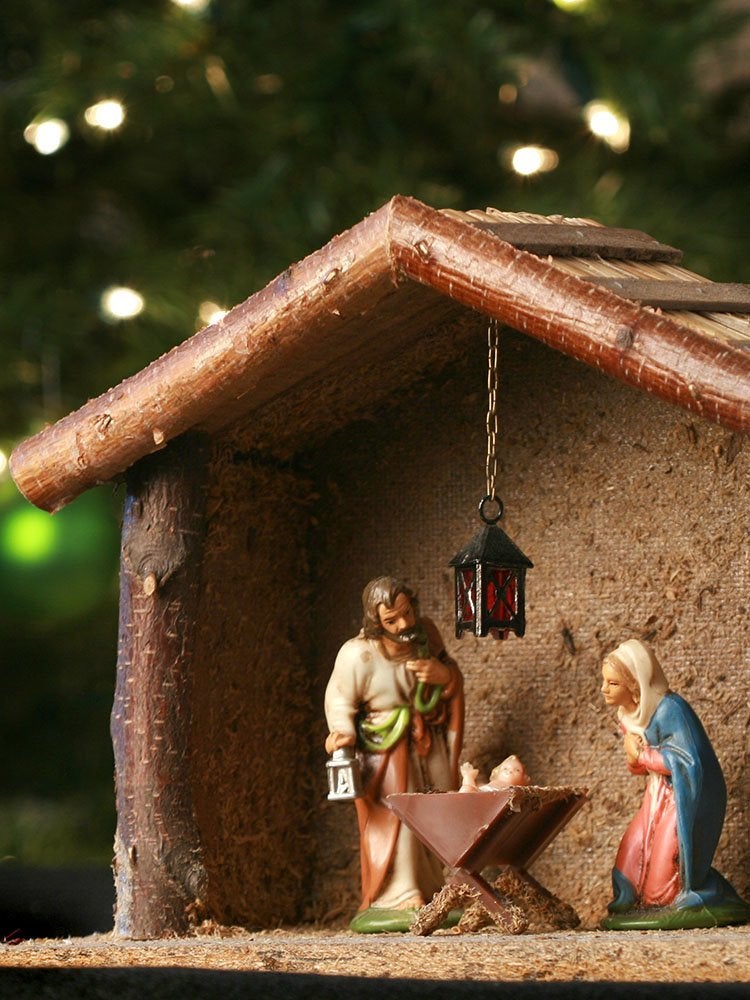
Whether you recreate the nativity scene on your mantle or in the front yard, you have St. Francis of Assisi to thank for these divine dioramas. Assisi created the first real-life nativity scene way back in 1223—but only after he got approval from Pope Honorious III. Staged in a cave in the Italian town of Grecio, Assisi’s living nativity scene featured a manger and an ox and donkey, and drew nearby townspeople to watch as the saint delivered a biblical message. Even so, as The Smithsonian notes, the key players in the typical nativity scene—the three wise men, shepherds, and farm animals—were never featured together in the Bible, making most recreations improvisational but still ingrained as a symbol of the season.
Christmas crackers didn’t start out cracking.
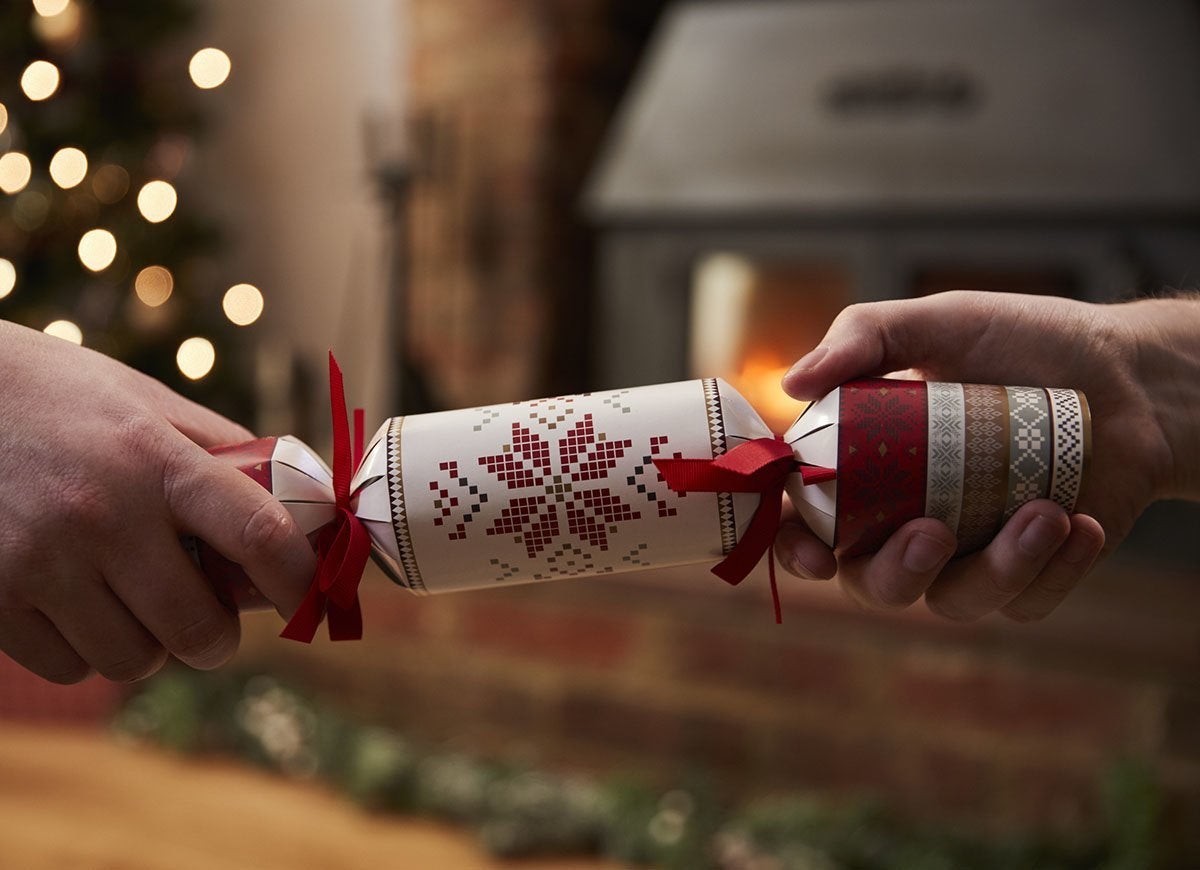
A festive table topper and party favor in one, a Christmas cracker is a wrapped cardboard tube that reveals a joke or a gift when pulled apart by two people. Merrymakers have been opening them on Christmas Day since the 1850s, when confectioner Tom Smith began adding a small motto inside the twisted packages in which he sold his almond bon-bons. However, the famous crack that sounds when the tubes open—produced by the friction of the chemical-laden paper inside them rubbing together—was only later added after Smith was inspired by the crackle of a fireplace. Eventually, the candies in the aptly-named “crackers” were replaced with small gifts, cementing a Christmas custom observed around the world.
Yule logs were originally Yule trunks.
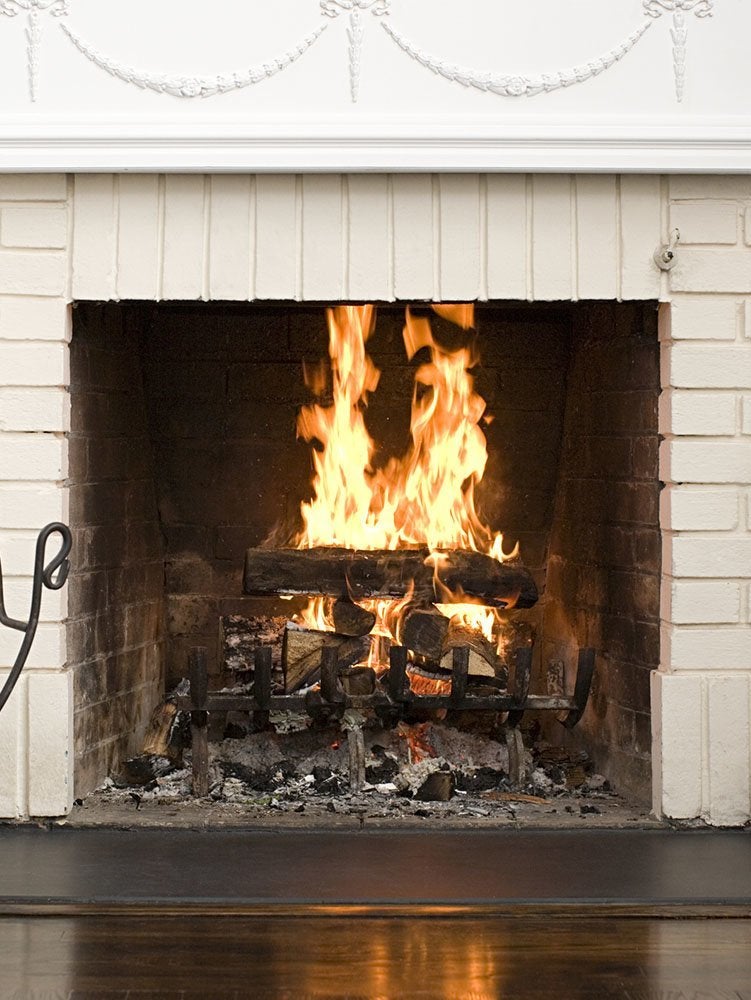
Yule logs, named after “jol” (Yule), an old winter solstice festival in Scandinavia, are typically lit on Christmas Eve to produce a festive ambiance and produce warmth. The Yule log is said to have been lit to coax the sun to rise from the south and usher in the rebirth of the land. But unlike the manageable blocks of wood that are burned in hearths today during the holidays, Yule logs of old were full-blown tree trunks. Families would cut down trees and then feed one end of the trunk into the fire, where it would slowly burn for the full 12 days of Christmas.
Related: The Tree-Free Christmas: 14 Alternatives You Can DIY
Pomanders were thought to ward off the Plague.
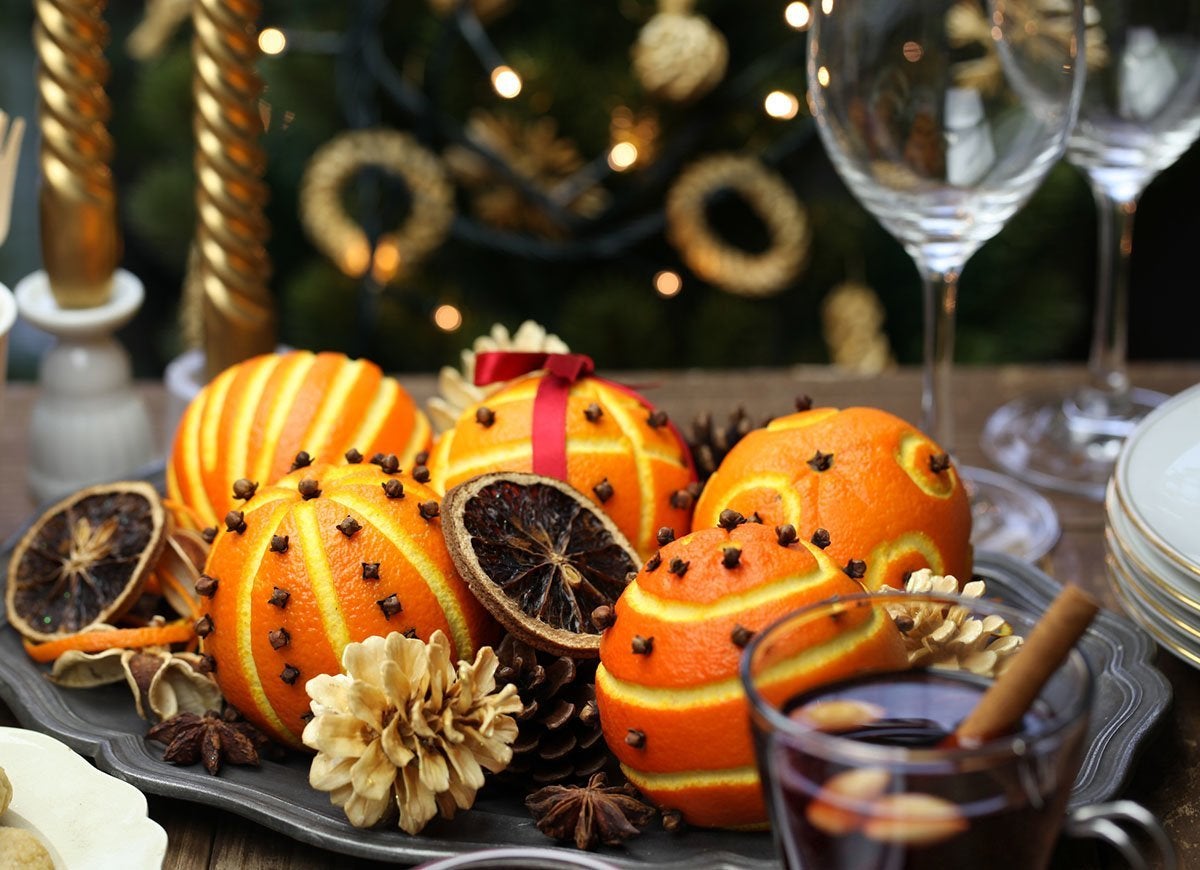
To create an eye-catching DIY table centerpiece and infuse the air with a fresh, fruity scent during the holidays, put a few pomanders on display before the guests arrive. Originating in the 14th century, small sachets or boxes filled with aromatic herbs were used (albeit unsuccessfully) to purify the air in Europe at the time of the Black Plague. Today, pomanders, derived from “pomme d’ambre,” the French equivalent of “apple of amber,” have been replaced with oranges studded with whole cloves and laced with spices including ground cinnamon and nutmeg. You can even loop a wire through the pomander and then attach a ribbon to create a fragrant tree ornament.
The More You Know

Now you can have a greater appreciation and understanding for these holiday traditions.

Save Energy While Staying Cozy
Today’s energy-efficient space heaters warm individual rooms, so users needn’t heat unoccupied areas of the house. We tested the most popular space heaters on the market to find out which ones performed the best.
